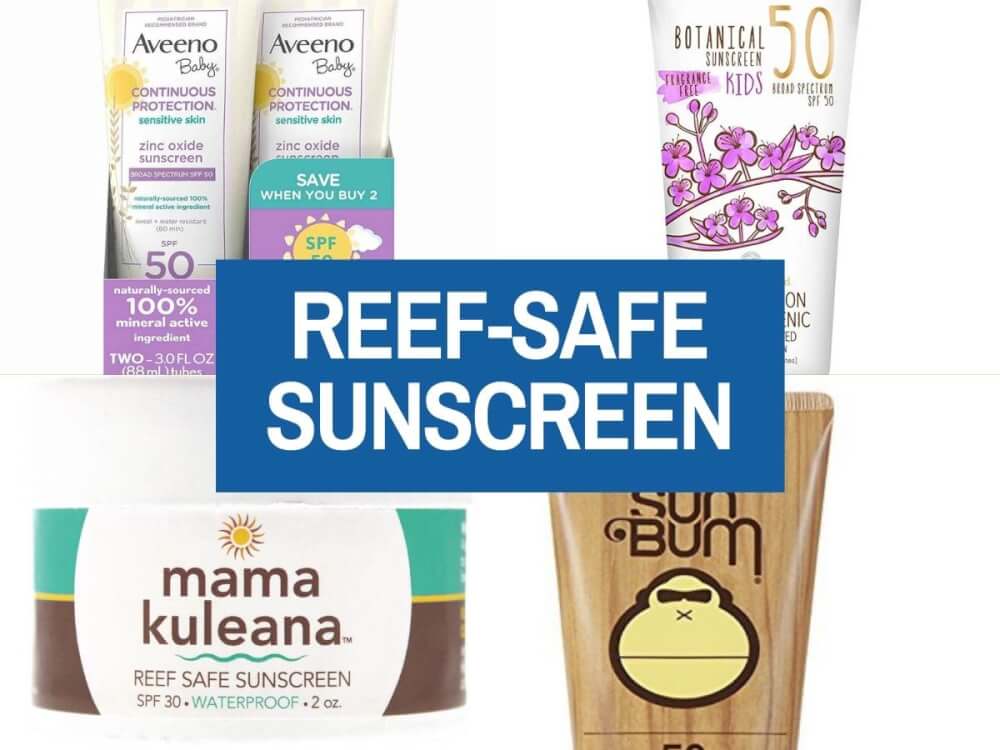Did you know there’s a Hawaii sunscreen ban on all sunscreen that isn’t reef safe? Keep scrolling to find the best sunscreen for Hawaii to add to your beach bag that’s Eco friendly!
This post about the best sunscreen for Hawaii was written by Hawaii travel expert Marcie Cheung and contains affiliate links which means if you purchase something from one of my affiliate links, I may earn a small commission that goes back into maintaining this blog.
Are you wondering what kind of sunscreen is allowed in Hawaii?
We all know how important it is to use sunscreen when you’re in a warm climate, like Hawaii. It protects your skin from harmful sun rays.
It’s especially important for kids to wear sunscreen in Hawaii. We often slather them in it just to make sure there is no risk of them burning.
It’s definitely important to protect our skin in warm climates. But it’s also important to consider the health of the environment we are enjoying.
Traditional sunblock is made from synthetic chemicals. You might now be aware of the detrimental effect of these chemicals on the environment. They mainly impact coral reefs, but also marine life.
However, you can find natural mineral sunscreen alternatives that are both effective and environmentally friendly.
Read on to find out which Hawaii suntan lotions are reef safe and which sunscreens should be avoided for the protection of our oceans.
Ok, let’s take a look at Hawaii approved sunscreen options!
Find out the best zero-waste travel items and what I always pack for the flight to Hawaii!
See the top rated reef safe sunscreen here!
Want to skip all the planning and just access my detailed Hawaii Itineraries complete with daily schedules, kid-friendly activities, and travel hacks? Click the button below.
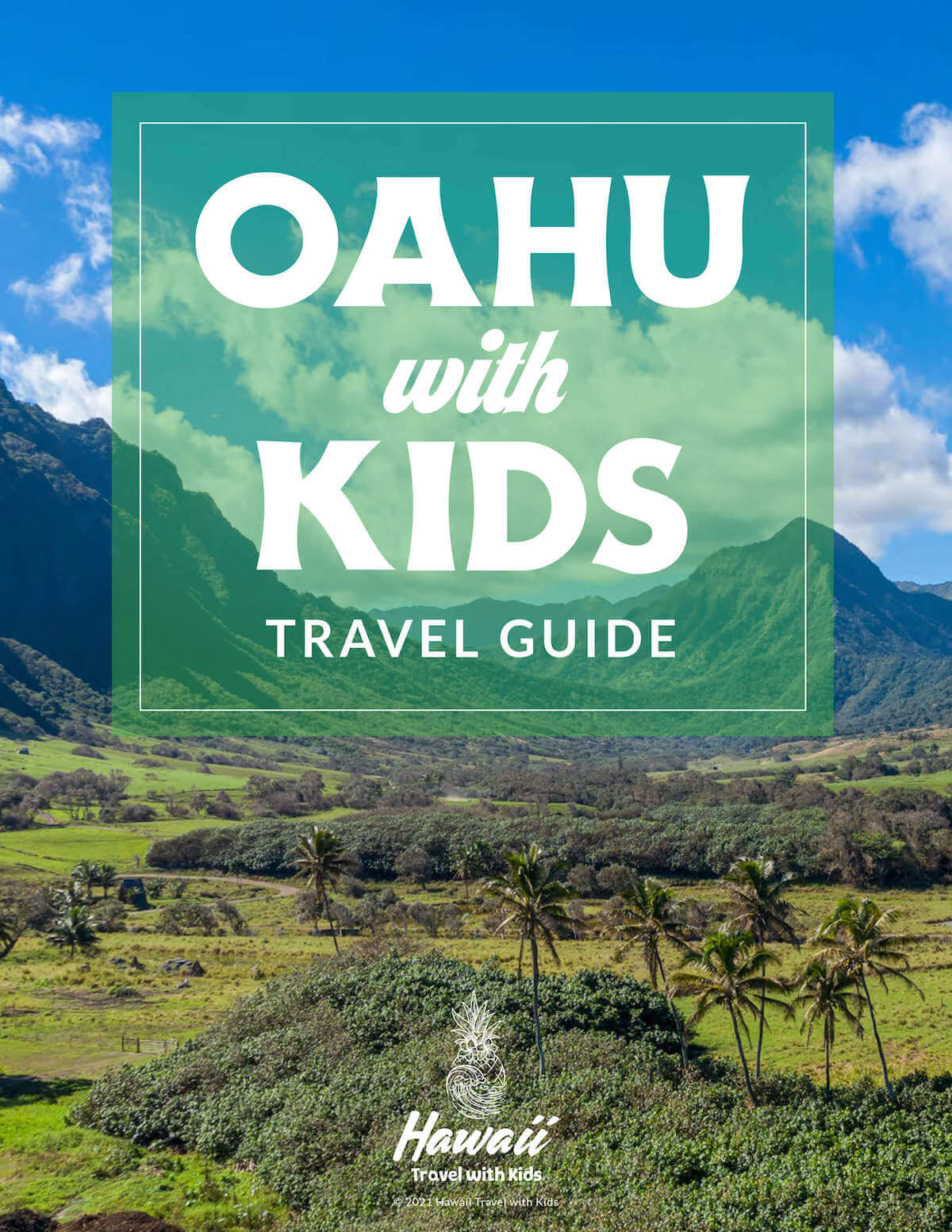
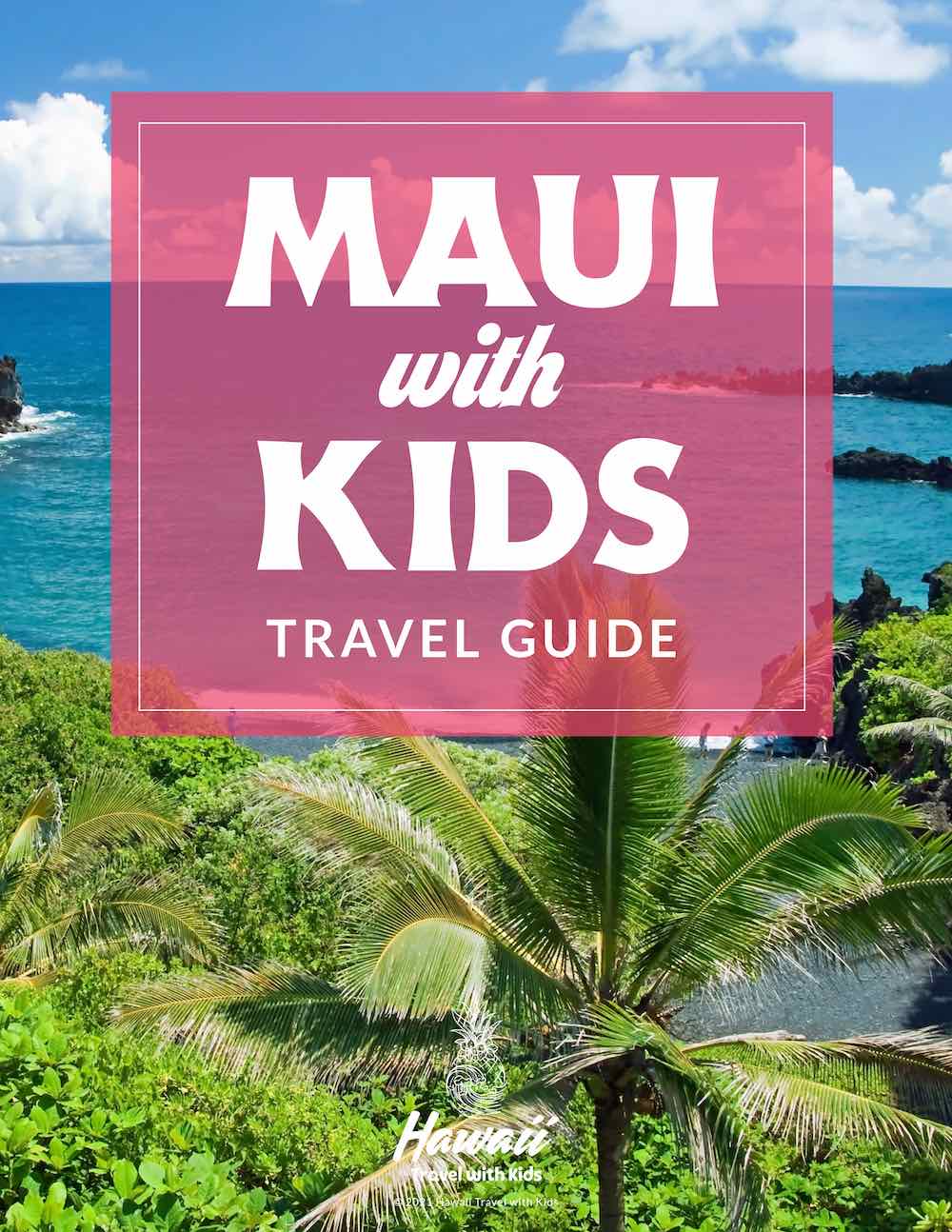

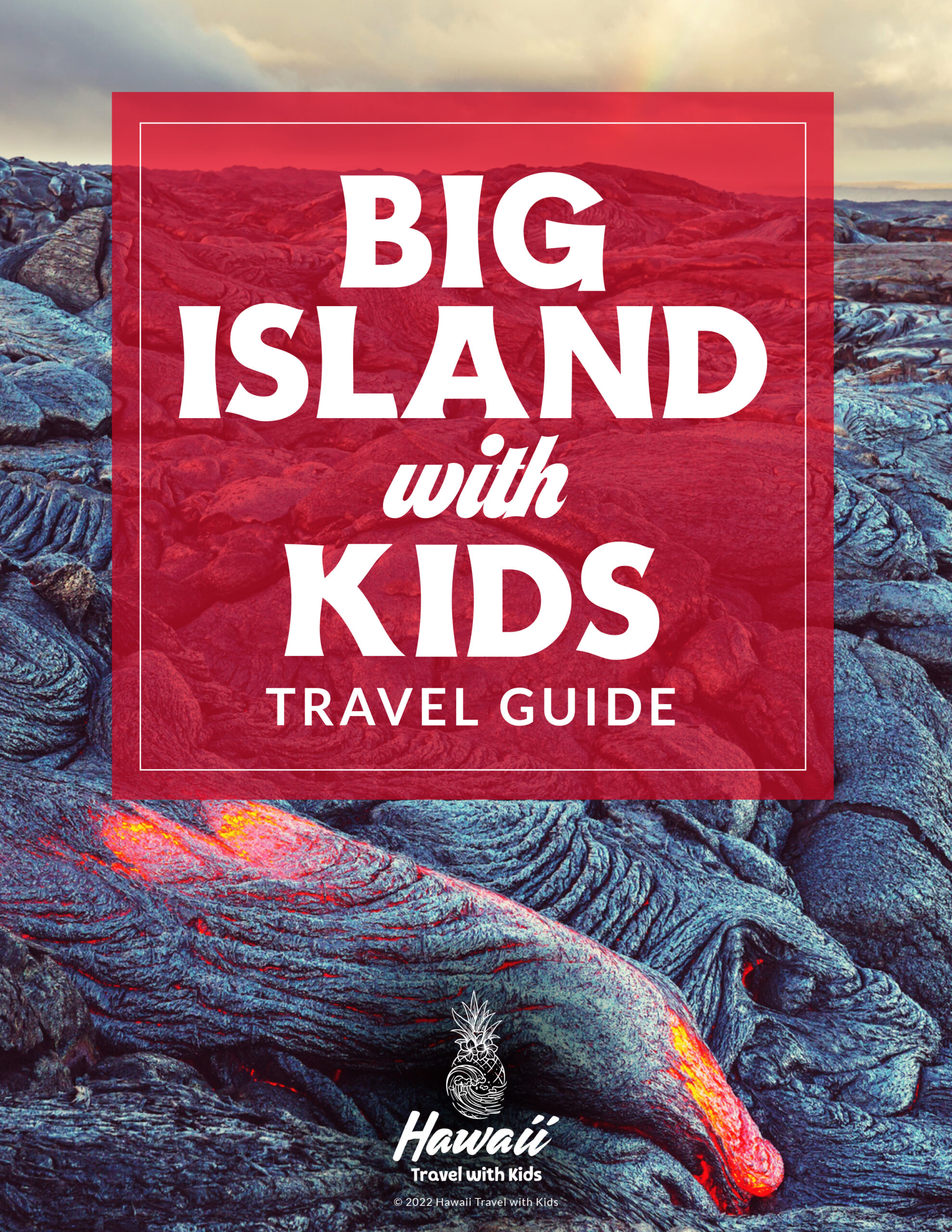
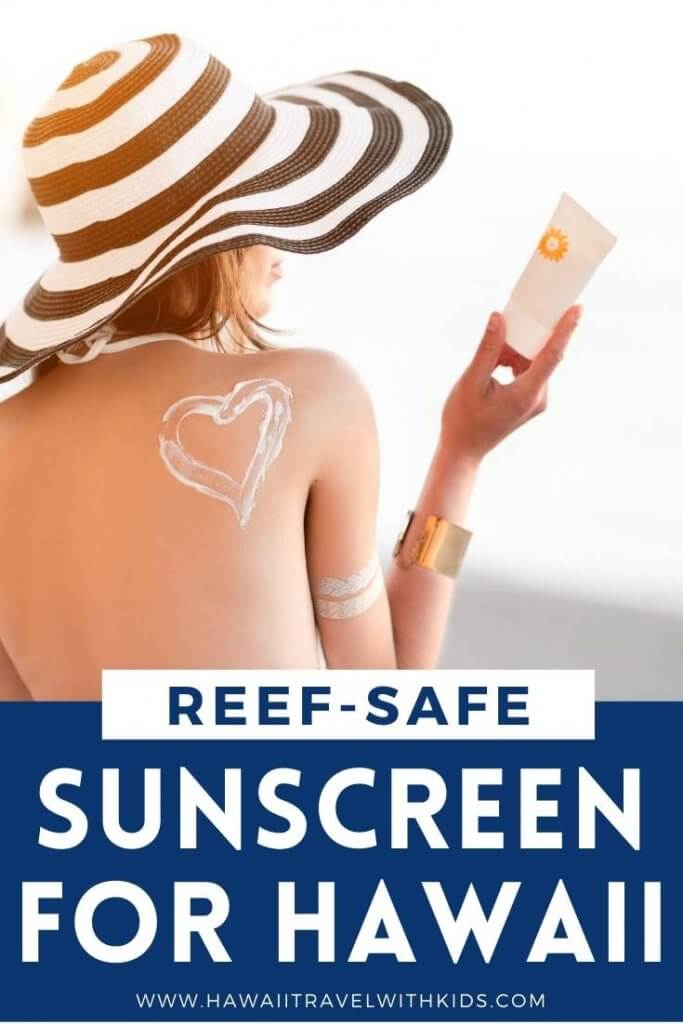
Why Should We Use Reef Safe Sunscreen?
Reef-safe sun protection is easily available, but most places don’t make them a requirement. So, people are still using chemical-based sunscreens.
However, some places are ahead of the game. Hawaii is one such place. Is reef-safe sunscreen required in Hawaii? Absolutely.
You should know that most non-reef-safe sunscreen is FDA approved. But Hawaii has banned any sunscreens that contain chemicals known to harm the environment.
Reef-safe sunscreen is the only sunscreen allowed in Hawaii.
However, regulations shouldn’t be the only reason that you stop using non-reef-safe sunscreens. Sunblock that’s non-reef safe contains chemicals that are extremely harmful to marine ecosystems, such as coral reefs.
They cause a process known as “coral bleaching.” This process disrupts the symbiotic relationship between coral and other organisms that keep the coral reef alive.
Reef-safe sunscreen is made from minerals rather than harmful chemicals. You may or may not have heard of these minerals, zinc oxide and titanium dioxide.
Hawaii allows sunscreens using these minerals because studies haven’t shown any evidence that they negatively impact coral reefs and other sea life.
So, What’s the Best Sunscreen for Hawaii?
Now you know why you should only be using mineral-based sunscreen. Next, it’s time to figure out which ones are the best to use. That way you know which Hawaii safe sunscreen you’d like to get.
There are so many sunscreens out there to choose from. You may need a little help in deciding which ones to go for. I’ve compiled a list of the best reef-friendly sunscreens out there so you can choose which is the best one for your needs.
Read on to find out the best Hawaii-approved sunscreen brands. On my list you’ll find options tahat are both safe and effective for you and your family. And each sunscreen is environmentally sound.
Best Sunscreen for Hawaii for Babies
1. Baby Bum
Baby Bum is a reef-safe sunblock developed for babies. The product is environmentally sound and kid-friendly every step of the way. Check out the latest prices and more details.
Plant-based and developed specifically for babies’ sensitive skin, this is one of the best sunscreens for babies around.
What I love best about it is that they have several options you can choose from depending on the type of sunscreen application you prefer.
First, they have a normal bottle for general application. You just squeeze the cream out. There’s also spray alternative for people who prefer that, as well as a face stick, which makes applying the cream on those sensitive face areas easy.
This sunscreen is SPF50, so it provides high protection for your baby’s delicate skin.
Pros:
- Approved by pediatricians and dermatologists
- Water resistant
- Made for sensitive skin
- Many application options
- Fragrance free
- SPF 50 sunscreen
Cons:
- Small volume for the price
- Plastic Packaging
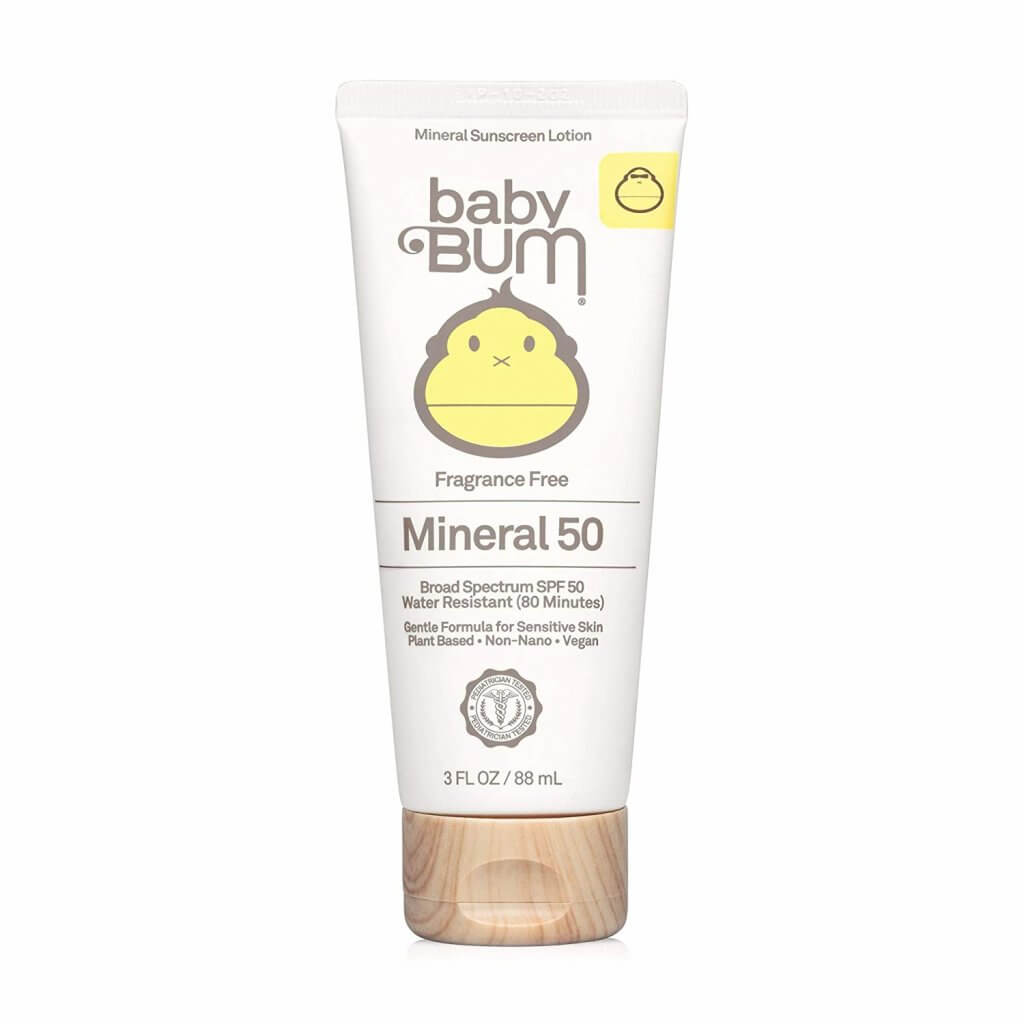
2. Aveeno Baby Sunscreen
You can count on Aveeno Baby sunscreen. That’s because Aveeno is a specialist in natural baby skincare. So, you know it’s a safe product to use that will also be good for your baby’s skin! Check out the latest prices and more details.
It’s a very thick natural zinc sunscreen that’s sure to protect your baby’s skin from getting burned. It provides high protection at SPF 50.
Aveeno Baby Sunscreen comes in 2 forms. There’s the cream in a bottle, and there’s also a small sunscreen stick that’s great for face application and less mess.
Pros:
- Pediatrician recommended
- Naturally sourced minerals
- SPF 50 sunscreen
- Sweat and water resistant
- Two application options
Cons:
- Not fragrance free
- Hard to rub in
- Plastic packaging
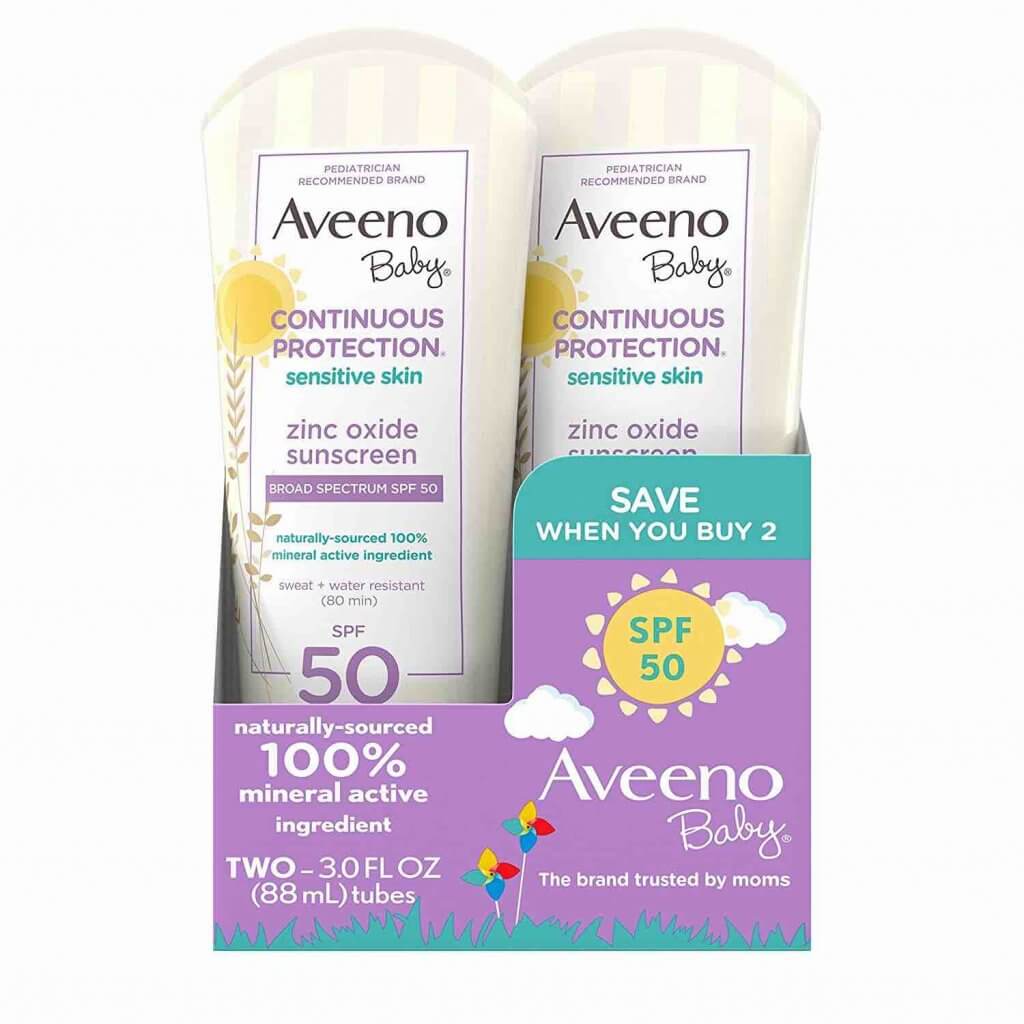
Best Sunscreen for Hawaii for Kids
3. Badger 30 SPF Sunscreen
Badger sunscreen is a broad-spectrum mineral sunscreen lotion developed especially for kids that are outside enjoying the sunshine. It is made from 98% organic ingredients, and it’s GMO-free, nano free, and biodegradable. Check out the latest prices and more details.
This is a great sunscreen if you’re looking for a hypoallergenic option that’s good for sensitive skin. It has mineral ingredients are naturally sourced and the whole sunscreen has minimal ingredients.
Pros:
- Mainly Organic
- GMO free
- Non nano
- Hypoallergenic
Cons:
- Lower SPF at SPF 30
- Plastic Packaging

4. Australian Gold Botanical Sunscreen for Kids
Australian Gold Botanical sunscreen is a broad-spectrum mineral sunscreen for kids that’s enhanced with Australian botanical elements that nourish the skin. Check out the latest prices and more details.
It’s free from parabens, PABA, phthalates, petroleum, SLS (sulfate), dyes, and oils. This makes it a less toxic and more eco-friendly option.
This mineral sunscreen lotion provides all-day protection and is water-resistant. And it’s approved by both dermatologists and pediatricians. Australian Gold Botanical Sunscreen is designed for sensitive skin to both protect and nourish.
Pros:
- Free from many toxic chemicals
- SPF 50
- Dermatologist and pediatrician approved.
- Hypoallergenic
- Fragrance free
Cons:
- Plastic packaging

Best Sunscreen for Hawaii for Adults
5. Mama Kuleana Waterproof SPF 30
Mama Kuleana sunscreen is one of the best reef-safe sunscreen products to protect your skin. Check out the latest prices and more details.
Made in small batches in Hawaii, this highly moisturizing sun cream contains a number of nourishing oils that will protect and soothe.
This is one of my favorite Hawaiin reef safe sunscreen options! And I love that it supports a small business in Hawaii.
Pros:
- Highly moisturizing and nourishing
- Eco friendly and biodegradable packaging
Cons:
- Small but more expensive
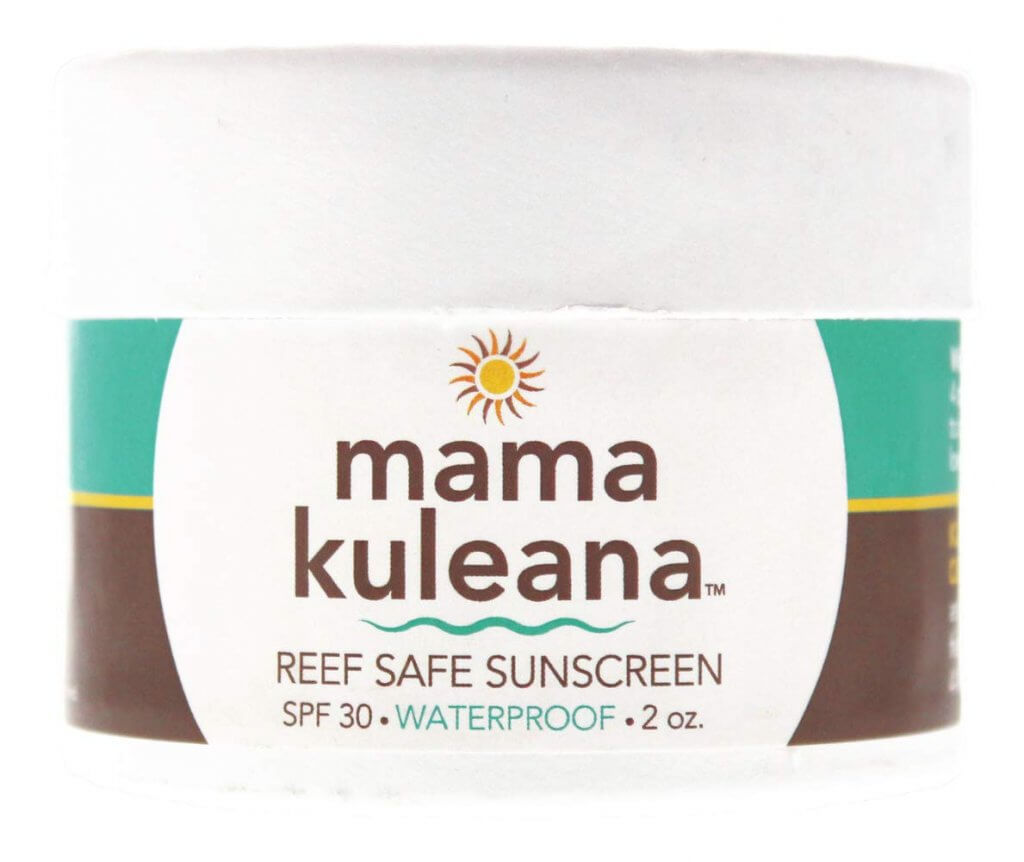
6. Blue Lizard Reef Friendly Sunscreen
Blue Lizard sunscreen is paraben-free and fragrance-free sunscreen. It’s great for people with sensitive skin. Check out the latest prices and more details.
It’s completely mineral-based with a high protection factor and no chemical active ingredients. I find that Blue Lizard is a great general sunscreen for Hawaii because it’s comfortable enough to use when you’re out or when you’re at the beach.
Pros:
- Paraben-free
- Fragrance-free
- SPF 50
- Waterproof & sweat resistant
- Bottle turns blue in harmful UV light
Cons:
- Plastic Packaging
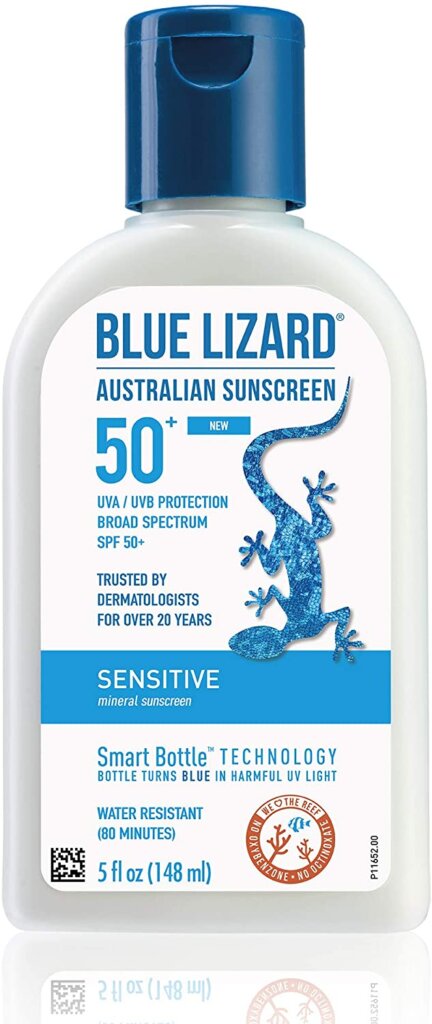
Sunscreen for Sports Lovers and Active People
7. Banana Boat Sport Sunscreen
Banana Boat sport sunscreen is a well-respected reef-safe sunscreen. It’s a great option for people who are active in and out of the water. Find the best prices here.
It’s an easy-to-use sunscreen that you can buy in several types of bottles from a quick spray-on to a cream you rub in. It uses a lightweight formula that is perfect for active adults and kids.
I love this sunscreen because it comes in a variety of SPF factors. That means you can choose the protection that suits you.
Pros:
- Light weight formula
- Several SPF factors to choose from
- Great for water sports
Cons:
- Spray doesn’t last too long
- Has a stronger smell
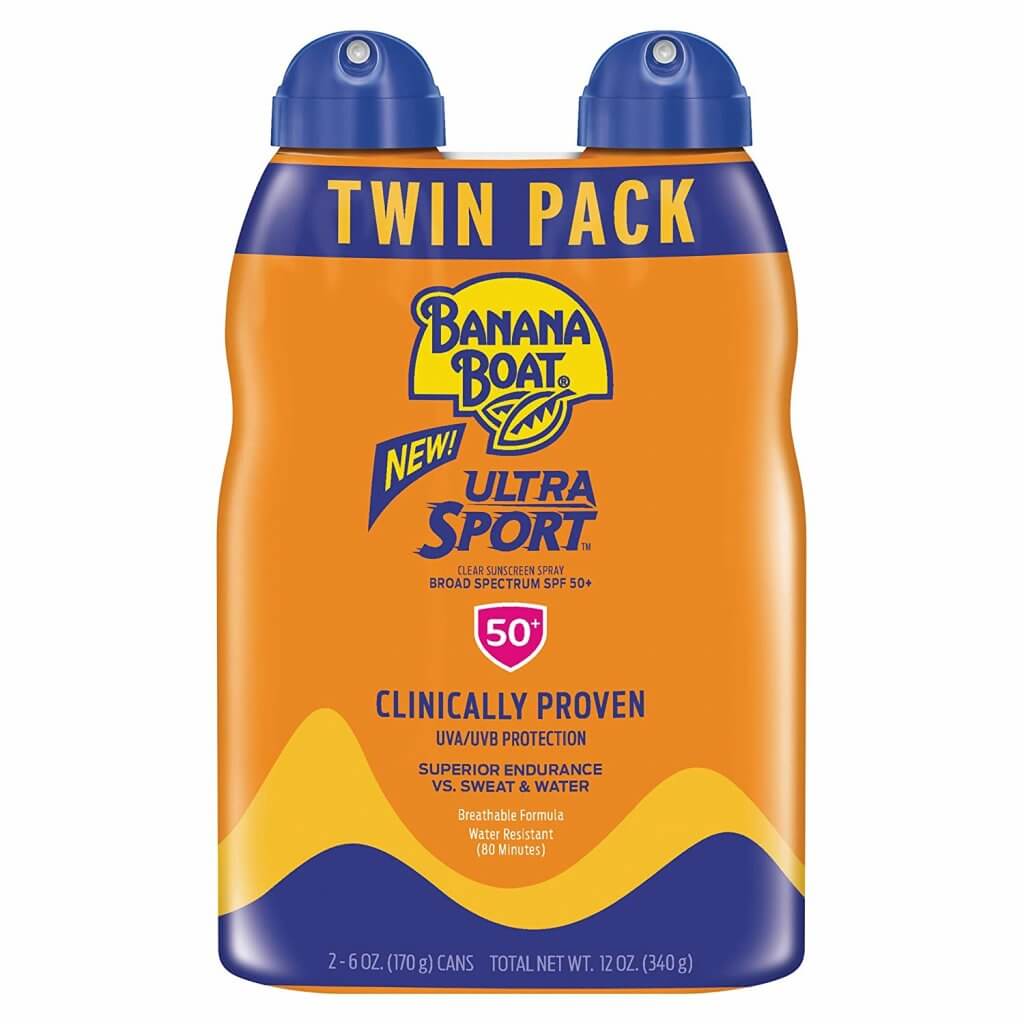
Reef Safe Sunscreen FAQs
While you’re looking for the best sunscreen for Hawaii that’s reef safe, let’s break down the most commonly asked questions. Then you’ll have all the information you need to make the right choice for your family.
How do chemical sunscreens protect your skin vs. mineral sunscreens?
Chemical sun cream works by absorbing the UV rays (the damage-causing agents) and converting them to heat. The chemicals in these sunscreens then absorb the heat preventing them from penetrating people’s skin and causing damage.
But mineral-based sunscreens work differently. Titanium dioxide works by absorbing and scattering UV rays, so they don’t get absorbed by the skin. It’s effective at deflecting both UVA and UVB rays. Zinc oxide works by reflecting both UVA and UVB rays to prevent them from penetrating the skin.
Will mineral sunscreens protect my children’s skin as effectively as chemical sunscreens?
Protecting the environment for most people is a high priority, but the health of their children is more so! You might be concerned that reef-safe sunscreen may not be as effective at protecting your child’s skin compared to chemical sunblocks.
But don’t worry! Reef-safe sunscreen is highly effective at protecting skin from the damage the sun can inflict. So, you shouldn’t be concern that switching to reef-safe sunscreen will be less effective.
Which ingredients are reef safe?
Titanium dioxide and zinc oxide are the 2 active ingredients in reef-safe sunscreen that protect your skin from the sun. If these 2 ingredients are listed on the back of the bottle, then your sunscreen is most likely reef safe!
However, for your sunscreen to be completely reef-safe, you need to make sure you avoid certain chemicals. You can find them listed in the question below.
What sunscreen ingredients cause coral bleaching and which chemicals should you avoid?
A number of chemical culprits are significant contributors to coral bleaching. These chemicals are in all your most popular general use sunblock.
Oxybenzone is one of the most widely used chemicals in sun cream protection. You’ll find it in over 3000 sunscreen products around the world.
There are other common chemicals to look out for in chemical sunscreens that aren’t coral reef friendly. They include the following:
- 4-Methylbenzylidine Camphor
- Butylparaben
- Octinoxate
These 4 chemicals are absolutely not reef safe and they are banned in Hawaii.
If you want to make sure your sunscreen is coral reef friendly, then make sure you check sunscreen ingredients on the side of the bottle before purchasing. Make sure they don’t have any of these chemicals present.
What is the difference between nano and non-nano zinc oxide?
In some reef-safe sunscreens, you’ll find that some zinc oxide is described as non-nano in the ingredients list. Zinc oxide is traditionally a nanoparticle meaning it’s a particle that’s very small. These zinc oxide nanoparticles are small enough to get absorbed by the skin which may not be very healthy.
However, non-nano zinc oxide is zinc oxide that has been modified. This means that they’re now too large to be absorbed by the skin. This is the preferred option.
How do sunscreen chemicals get into our oceans?
People most commonly use sunblock on beaches and when swimming in the ocean. When people use these sun creams and then go swimming in the sea, the sun cream eventually gets washed off the skin and into the ocean.
This is where the problem begins.
What effect do the toxic chemicals from non-reef-safe sunscreens have on coral reefs?
Once the sunscreen enters the ocean, it causes all sorts of damage. The chemicals released are toxic to many marine ecosystems. This includes coral reefs like the ones in Hawaii and Australia.
The main damage they cause is coral bleaching. This is where the delicate symbiotic relationship between the coral and other organisms gets disrupted. This basically kills off the coral reef.
It’s becoming a major problem for many coral reef ecosystems. This is why places such as Hawaii are now banning such sunscreens in order to halt the damage being done.
Are there any other products that contain these chemicals that I should avoid?
You should always check any product that says it has an SPF factor in it. The most common are makeup products. Many day creams and lip balms have an SPF factor. Make sure they are using reef-safe minerals rather than chemicals to provide their sun protection.
Tips on Using Mineral Sunscreen Effectively
Mineral sunscreen is really easy to use and it’s pretty much the same as using a traditional chemical sunscreen. However, it’s good to remember a few things so that you are using your sunscreen properly and effectively.
Most sunscreens are effective for one full day. But you need to check each sunscreen you’re using to make sure of this.
It’s always a good idea to reapply halfway through the day, just to make sure you and your kids are getting full coverage.
If you’re using waterproof sunscreen to go swimming, remember this only lasts for a window of time. Most sunscreens will remain waterproof for around 80 minutes. But check each sunscreen label to make sure.
If you’re in the water for longer, don’t forget to reapply after that time. And make sure to reapply your sunscreen once you get out of the water, too!
The Best Sunscreen for Hawaii Wrap Up
That was my complete guide for the best sunscreen for Hawaii! If I were to pick one of them as my favorite, I’d choose Baby Bum because it’s safe for the whole family. Everyone from babies to adults can use it, it has a strong SPF factor, it’s great for sensitive skin, and it’s reef safe.
You might already know about reef-safe sunscreens or maybe you’re just learning about them for the first time. Either way, I hope you can see how important it is to use reef-friendly sunscreens rather than the old-school chemical ones!
Our oceans are facing some serious environmental challenges and chemical sunscreens just add to this problem. By using mineral-based sunscreen you can reduce the impact of damaging chemicals that are entering our oceans.
Hawaii has banned non-reef-friendly sunscreen and it’s not long before other places will most likely follow suit. So, it’s a good idea to know which sunscreen you can and cannot buy for places like this.
Use mineral-based sunscreen at home and on vacation. Hopefully this will help slow down the damage to coral reefs and allow future generations to enjoy them.
Now you know what sunscreen is allowed in Hawaii! Which one will you be adding to your Hawaii packing list?

